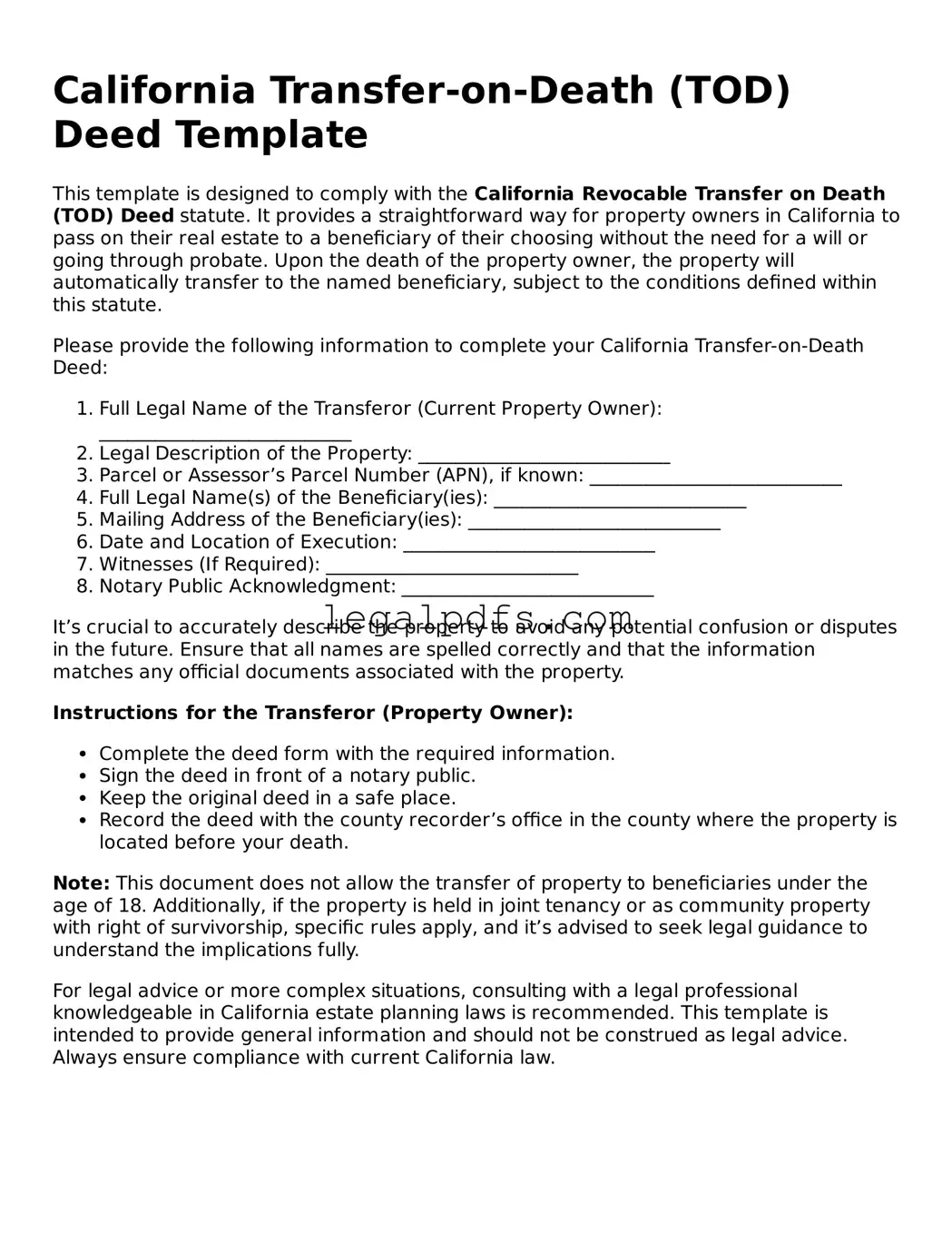What is a California Transfer-on-Death Deed?
A California Transfer-on-Death (TOD) Deed allows property owners to pass on their real estate to a designated beneficiary without the need for a formal probate process after their death. This deed becomes effective upon the death of the property owner, automatically transferring ownership to the named beneficiary.
Who can use a Transfer-on-Death Deed in California?
Any individual who owns residential property in California and desires to have it transferred to a beneficiary upon their death can use a TOD Deed. It’s important that the person creating the deed has the legal capacity to make decisions and is not under any undue influence or pressure.
Is a Transfer-on-Death Deed revocable?
Yes, a TOD Deed is revocable at any time before the death of the property owner. The owner can change the beneficiary or revoke the deed entirely, either by filing a new deed, a revocation form, or by selling the property during their lifetime.
What types of property can be transferred using a TOD Deed?
In California, single-family homes, condominiums, and certain types of agricultural land of up to 40 acres with a residence can be transferred using a TOD Deed. This deed cannot be used for transferring commercial property.
How does one create a Transfer-on-Death Deed in California?
Creating a TOD Deed involves filling out the proper form, which must include a legal description of the property, and naming the beneficiary who will receive the property. The deed must then be signed in the presence of a notary and filed with the county recorder’s office where the property is located before the death of the property owner.
What happens to the property if the beneficiary predeceases the property owner?
If the beneficiary predeceases the property owner, the TOD Deed becomes void. The property owner should update the deed to name a new beneficiary. If not updated, the property will be part of the estate and will go through probate.
Are there any tax implications for using a Transfer-on-Death Deed?
Using a TOD Deed has various tax implications, including potential impacts on estate and inheritance taxes, and capital gains taxes for the beneficiary. It’s advisable to consult with a tax advisor to understand the specific tax consequences.
Can a property with a mortgage be transferred with a TOD Deed?
Yes, a property with a mortgage can be transferred using a TOD Deed. However, the beneficiary will assume responsibility for the existing mortgage. It's important for the beneficiary to be aware of and prepared for this obligation.
What happens after the death of the property owner?
After the death of the property owner, the beneficiary must file a death certificate and an affidavit with the county recorder's office to claim ownership of the property. This process allows for the property to be transferred without the need for a probate court’s involvement.
